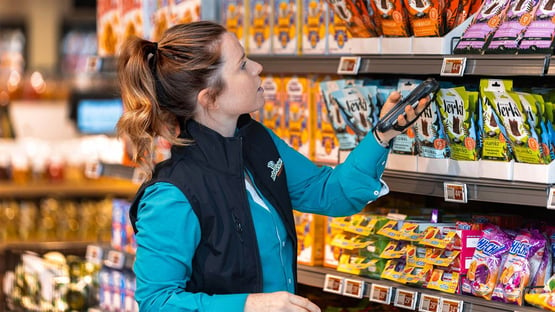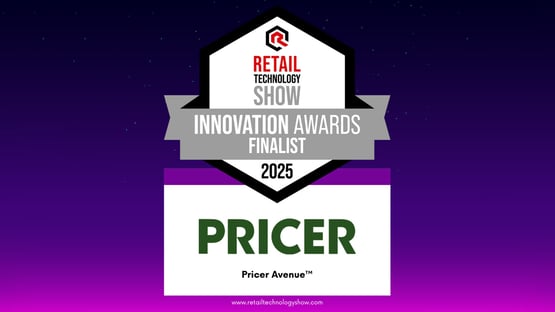In order to increase on-shelf availability (OSA) in supermarkets, retailers need to be more collaborative with staff as well as partners.
It is worth remembering that out-of-stocks are lost money in so many areas - lost sales, lower customer satisfaction and loyalty, reduced market share and higher labour costs resulting from trying to fix them using old or non-tech solutions.
To address this challenge, retailers must explore and adopt a variety of advanced solutions that enhance on-shelf availability. By fostering collaboration among retail managers, staff, and technology companies, supermarkets can significantly improve their inventory management and customer service.
Technology solutions to improve OSA
Several innovative technologies have emerged to help retailers improve their OSA. Here are some of the key solutions that retail managers should consider:
1. Electronic Shelf-Edge Labels (ESLs)
Electronic Shelf-Edge Labels are digital price tags that display pricing and product information on shelves. ESLs offer several advantages over traditional paper labels:
- Real-time Updates: Prices and product information can be updated instantly across the store, reducing pricing errors and ensuring consistency.
- Inventory Alerts: ESLs can be integrated with inventory management systems to alert staff when stock levels are low, prompting timely restocking.
- Enhanced Customer Experience: ESLs can display additional product information, promotions, and even QR codes for more detailed product details, enhancing the shopping experience.

2. Artificial Intelligence (AI)
AI technology can revolutionise inventory management and forecasting in retail. AI can analyse vast amounts of data to predict demand more accurately and optimise stock levels. Here are some ways AI can be utilised:
- Demand Forecasting: AI algorithms can analyse historical sales data, seasonal trends, and other factors to predict future demand and ensure optimal stock levels.
- Automated Replenishment: AI can automate the replenishment process by determining when and how much stock to order, reducing the risk of overstocking or understocking.
3. Hand-Held Devices
Hand-held devices are essential tools for retail staff to manage inventory and improve OSA. These devices offer several functionalities:
- Stock Counting: Staff can use hand-held devices to conduct regular stock counts, ensuring accurate inventory records and identifying discrepancies.
- Spotting Missing Items: These devices can scan shelves to detect missing items or misplaced products, enabling quick corrective actions.
- Picking Customer Orders: For online orders, hand-held devices can assist staff in efficiently locating and picking items, ensuring timely and accurate fulfillment.
Carrefour, one of Europe’s largest retailers with over 12,000 stores, has worked with Pricer to confront the problem of profitability by introducing technology in 500 stores that enables in-store staff to pick and pack online orders much more quickly, to boost efficiency and protect margins.
The solution is called Pick To Light and enables Carrefour to not only meet increased demand for online grocery orders fulfilled through its store network, but also to meet rising e-commerce demand more profitably. Pick to Light has been built on top of Carrefour’s current network of Pricer’s advanced electronic shelf-edge labels (ESLs).
The solution works by enabling staff to find and process items much more quickly. Ecommerce orders are processed centrally and the most efficient picking route is chosen automatically.
As the store staff collects each item from the order, an energy-efficient light on the ESL, called Instant Flash, sends a flash to signal the correct item that needs to be selected, helping staff more easily and quickly identify the correct products that need to be picked. Once the ESL is scanned by the store associate, the ESL for the next item on the order will begin to flash.

4. Flash Technology
Flash technology involves the use of LED lights and other visual indicators to highlight shelf stock status. This technology can be incredibly useful for:
- Visual Cues: Flashing lights can guide staff to specific shelves that need restocking, making the process faster and more efficient.
- Immediate Identification: Flash technology helps staff quickly identify out-of-stock items or areas that need attention, minimising downtime and ensuring shelves are always stocked.
Collaborative efforts for success
To effectively implement these technologies, collaboration between retail managers, staff, and technology companies is crucial. Here are some steps to foster successful partnerships:
- Training and Development: Ensure that staff are well-trained in using new technologies and understand their benefits. Continuous training programs can help staff stay updated with the latest advancements.
- Feedback Mechanisms: Establish channels for staff to provide feedback on the technologies they use. This feedback can help improve systems and processes.
- Technology Integration: Work closely with technology companies to ensure seamless integration of new solutions with existing systems. Regular updates and maintenance are essential to keep technologies running smoothly.
- Pilot Programs: Implement pilot programs to test new technologies on a smaller scale before rolling them out across the entire store. This approach allows for adjustments based on real-world feedback and minimises risks.
Conclusion
Improving on-shelf availability is a critical goal for supermarkets aiming to enhance customer satisfaction and boost sales. By embracing advanced technologies such as electronic shelf labels, AI, hand-held devices, and flash technology, retailers can significantly improve their inventory management.
However, the key to success lies in the collaboration between retail managers, staff, and technology companies. Together, they can create an efficient, responsive and a customer-centric retail environment that ensures products are always available when customers need them.
It's time to improve your stores on shelf availability! Reach out to Pricer and we will help you take the next step.
This article was originally published in ISN Magazine on Aug 22, 2024.



